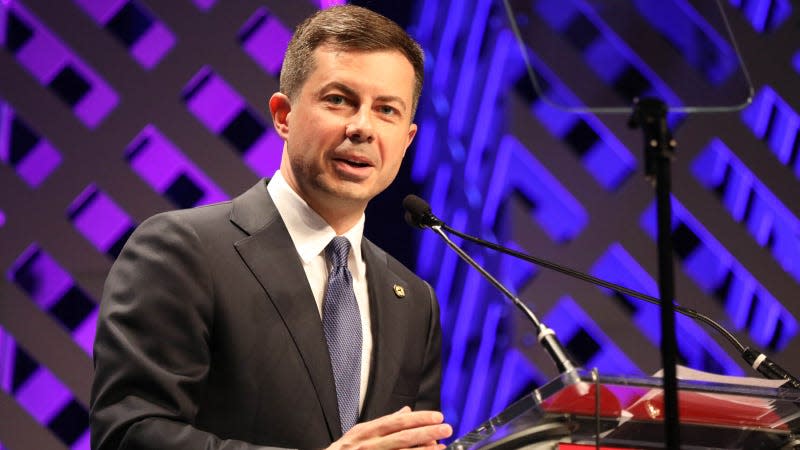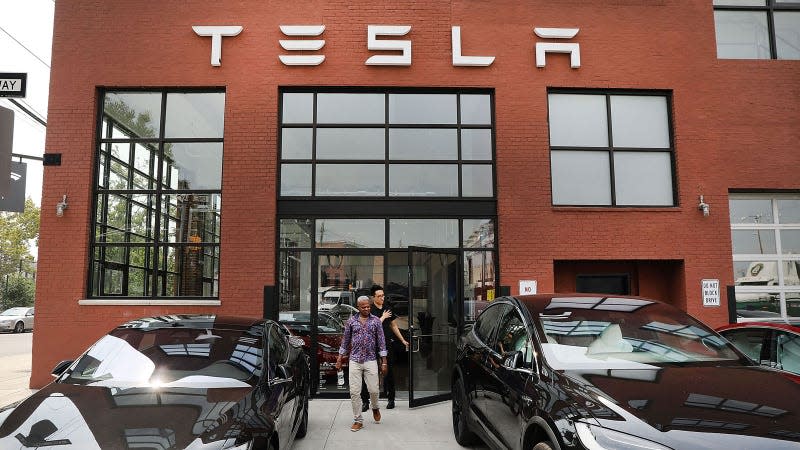U.S. in ‘Valley of Death’ as Autonomous Cars Write Checks the Tech Can’t Cash, Warns Pete Buttigieg

Pete Buttigieg isn’t convinced by the current crop of driver assist tech.
Self-driving cars have been billed as the future of transportation for decades. In the sci-fi space, they’ll let you drift off to sleep as you’re whisked to your destination in a private bubble, while a more grounded person might prefer to point out the significant safety improvements they could bring to U.S. roads.
Some experts estimate that self-driving cars could cut out 72 percent of highway incidents on U.S. roads, once they become widespread. But right now, self-driving cars aren’t widespread. Heck, they aren’t even a reality yet.
Read more
“It feels like the widespread use of autonomous driving is seven years away, and it’s been seven years away for 10 years,” says U.S. Department of Transportation secretary Pete Buttigieg. “So the question is, will it be seven years away 10 years from now, or will we actually be getting somewhere?”

Cruise is testing its self-driving cars in San Francisco.
Despite this damning reality, advances are being made in the space. Waymo is showing positive improvements with its driver AI system and GM-backed Cruise is testing autonomous taxis in San Francisco, but these are far from finished products.
Cruise cars are facing issues on their proving grounds and other companies in the space, including Apple, have repeatedly run into problems getting the cars to handle every day obstructions on the road.
All this has been happening while firms such as Tesla peddle advanced driver assistance features as full-self driving capabilities, which they aren’t.
Buttigieg says: “There is a very serious danger right now in this kind of valley of death between where we started and where we’re headed, where these technologies do run the risk of making things worse. Especially if people see ADAS, which is an automated driver assistance system, and treat it like a driver replacement system.
“Just to be clear, I don’t care what they call these things, Autopilot or Self-Driving or whatever, there is no car that you can buy today from a dealer where you don’t have to be paying attention at all times when you’re driving.”

‘There is no car that you can buy where you don’t have to be paying attention at all times.’
Because of this jumbled messaging, consumer perception of self-driving cars is in a risky place. Buttigieg warns that we are approaching a “dangerous transition” before we reach the self-driving “promised land.” If we ever make it there, he believes that self-driving tech could be an important tools that we should use to cut traffic deaths here in the U.S.
Buttigieg adds: “40,000 people a year die in car crashes and we have been bathed in this level of carnage all our lives. So we are a bit like people who grow up in a place that is experiencing a war in terms of how normal we think that is.
“Technology is not always the answer to everything. But, frankly, it would be hard to do worse than human drivers when it comes to what we could get to, theoretically, with the right kind of safe, autonomous driving.”
But it remains to be seen how long it will take for self-driving cars to become a widespread reality for the average American. Until then, Buttigieg believes the focus should remain on creating “safer cars, safer drivers, safer vehicles, safer speeds” and improving post-crash care.
More from Jalopnik
Sign up for Jalopnik's Newsletter. For the latest news, Facebook, Twitter and Instagram.

